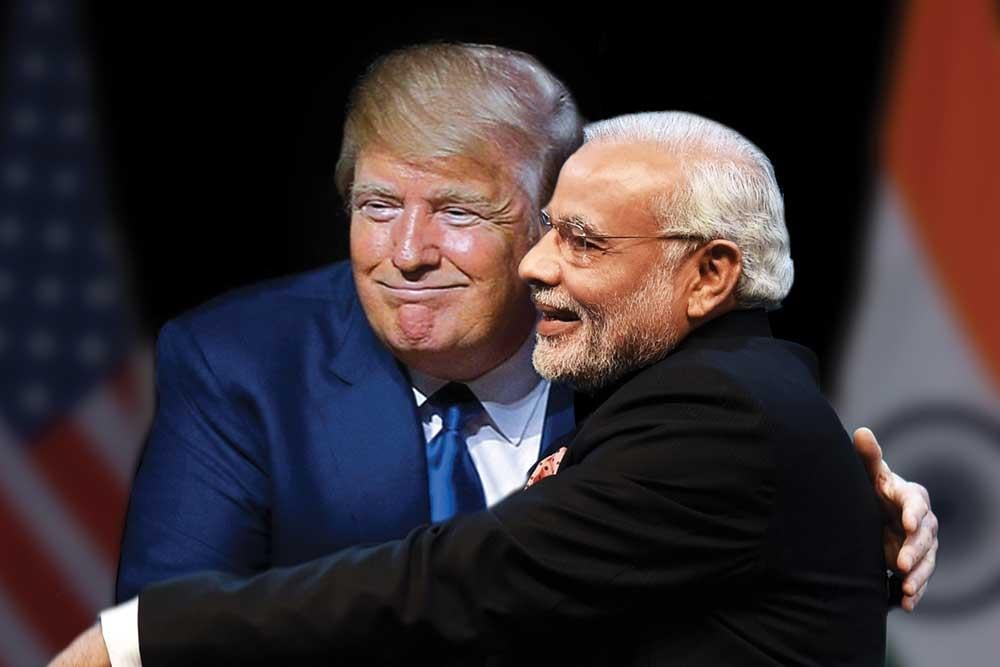
By Prarthana Kashinath
The 21st century will certainly go down in history as the beginning of an epoch that transformed the world from a unipolar to a multipolar global structure, where amongst other poles, China conspicuously sticks out its flag, closely followed by India. Consequently, the most extrusive transatlantic challenge for the predominant United States will be China—with its burgeoning economy, tenacious and ever-expanding military and navy, and territorial claims in and around its border.
Ever since 1972, when Nixon paid its first official visit to China, until 2016 under Obama’s presidency, the U.S. policy towards China has been accommodative. For instance, in 1979, the United States under Carter backed the ‘One-China Policy’, pursuant to which it ended the diplomatic recognition of Taiwan, shut down all its bases there, and recognized the People’s Republic of China as the sole authority in order to enhance its relationship with China.
The U.S. also opened up imports from China on such massive scale, that China’s foreign exchange coffers are now overflowing and has catapulted China as an economic superpower, even surpassing the United States in 2014, as estimated by the International Monetary Fund, in GDP terms.
However, the 2016 United States presidential election with Trump’s victory marks a watershed moment in the Sino-American relations. On many aspects, he is an aberration, considering that he is a novice in politics and diplomacy, but has a brash, native business intelligence. Notwithstanding the narcissistic ,sexist,racist and xenophobic undertones of the election campaign, Trump nevertheless won the electoral college. His election maybe signaled the shattering of the status quo and the banausic Washington establishment.
The United States has expressed discomfiture with China’s rise under Obama. Indeed, his “pivot to Asia” policy was aimed at “rebalancing” China. With Trump taking over the Presidential office, it appears likely that there will be a complete reversal of policy accommodation towards China.
China owes its extensive economic growth to its aggressive manufacturing and export industry. The United States has been a core consumer of cheap Chinese goods. As a consequence, U.S. trade deficit with China has increased manifold, and China has become the holder of a substantial share of U.S. public debt. Trump has vouched to impose heavy import tariffs to reverse this trend. He has constantly chastised China for currency manipulation and violations of intellectual property rights. Trump holds China responsible for loss of factory and manufacturing jobs in the United States.
With Trump pulling out of the Trans Pacific Partnership (TPP) agreement, he is all the more pressured to take up and negotiate trade issues bilaterally with all U.S. partners including China. While the world contemplated the extent to which Trump may adhere to his election pitch, he made it real by appointing Peter Navarro—a long-time critic of China—as head of the newly created White House National Trade Council.
Trump recently struck China’s most sensitive emotional chord, by calling into question the One-China policy and establishing direct contact with the Taiwan president, the first of such contacts since 1979. It is hard to know if this move was strategically contrived or just reckless.
If Trump’s China policy is mostly motivated by mercantilism and the need to seek trade concessions, then he has certainly gotten China’s attention by playing the Taiwan card. Trump is also miffed about China not doing enough to assist and bring North Korea to the negotiating table.
In this backdrop, it becomes crucial to assess the impact of Trump on India, particularly while looking at it through the prism of Sino-American relationship. If Trump wants to take his China policy, as underscored in the election campaign, to its logical conclusion, it will serve him best if he capitalizes on and galvanizes strategic ties with India.
Trump has been vocal about his interest in India—from recording advertisement campaigns in Hindi, to appointing Indian-Americans to the top echelons of government. Inter alia, Trump pulling out of the TPP and a possible bonhomie between Putin and Trump also works in India’s favor.
However, on the trade and economic front, what works best in the interest of the United States will be detrimental to India. Like China, India is an outsourcing destination for the U.S. India will also be negatively affected by the U.S. currency and trade war with China, by the potential immigration policy of Trump, and the likely interest rate hikes.
In this broad framework of probable U.S. policy toward China and India, New Delhi stands in an advantageous position. Trump perceives China as hostile, and India as an opportunity. He is likely to undertake measures to neutralize China and distract it from geographical forages in the Asia-Pacific region, thus leveraging India’s geostrategic status and also boosting Indo-U.S. congeniality.
As United States attempts to isolate China, there is also the likelihood that China may reach out to India, to negotiate with the United States in ‘regional’ interest. If that is the case, it will be an opportunity for India and China to break the ice and kick-start a new diplomatic relationship.
This will open the doors for India to commence negotiations with China on several outstanding and far- reaching issues, like membership into the Nuclear Suppliers Group, border issues, United Nations Security Council reforms, Regional Comprehensive Economic Partnership Therefore, Trump’s election looks like a win-win for India.
Prarthana Kashinath is an Indian lawyer at the Karnataka High Court.